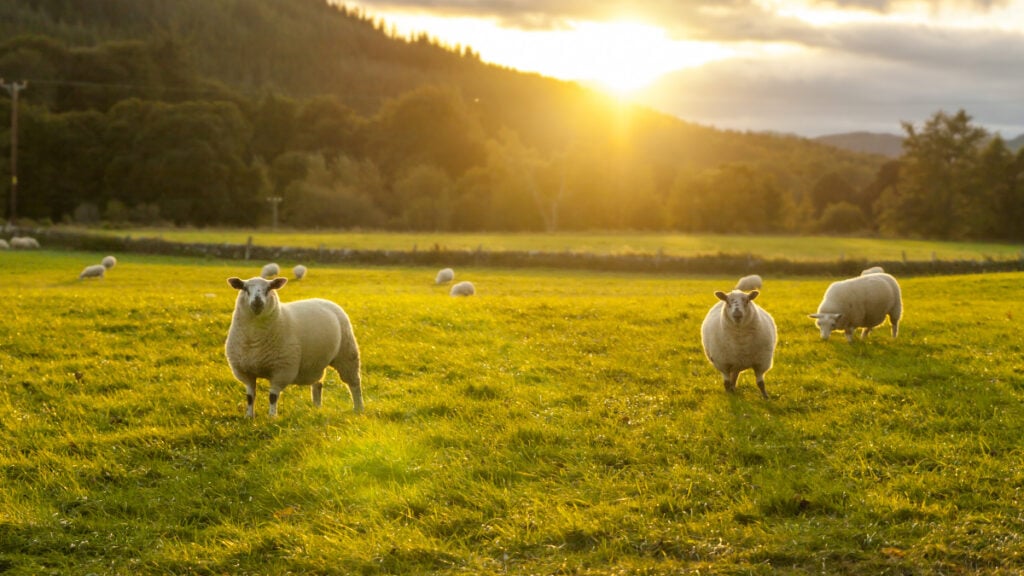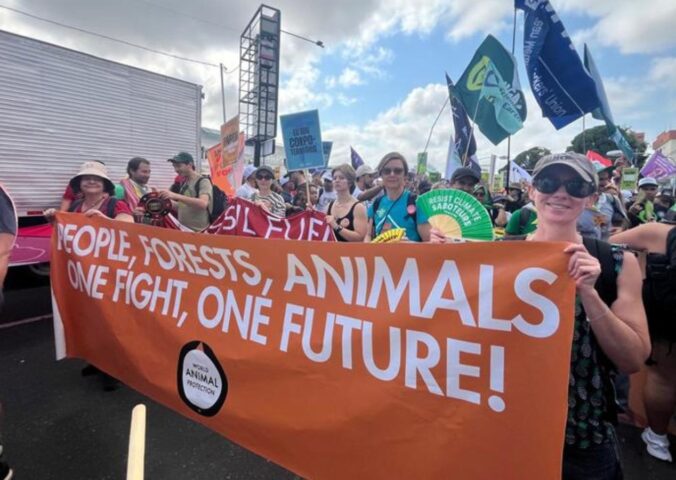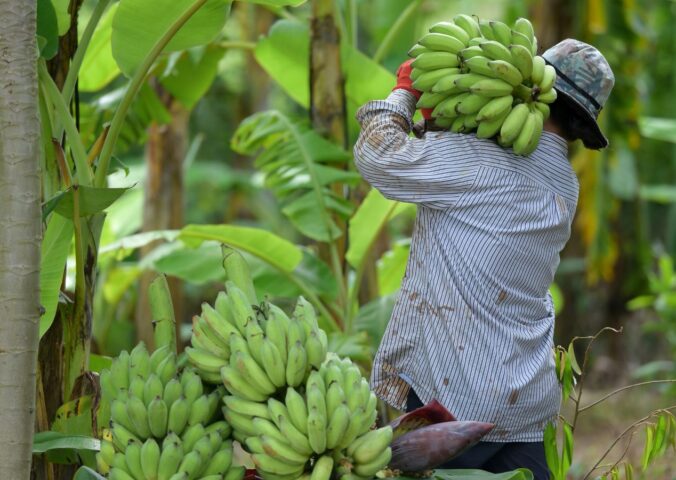Breaking Boundaries: The Science of Our Planet was released on Netflix this month.
Media and political attention to environmental issues have largely focused on fossil fuels and, more specifically, carbon dioxide. That is of course one of the world’s greatest issues and continues to deserve attention.
But the recent release, Breaking Boundaries: The Science of Our Planet, narrated by David Attenborough, makes the case for a system of environmental analysis that factors all key biophysical boundaries on our planet.
Breaking Boundaries
The lead scientist featured is Professor Johan Rockström. His research on planetary boundaries is both clear and meaningful.
He’s the founding director of the Stockholm Resilience Centre and has been advocating for this concept since at least 2009.
This was after he observed that climate change is only one of nine interrelated planetary limits to focus on to maintain a safe operating space for humanity.
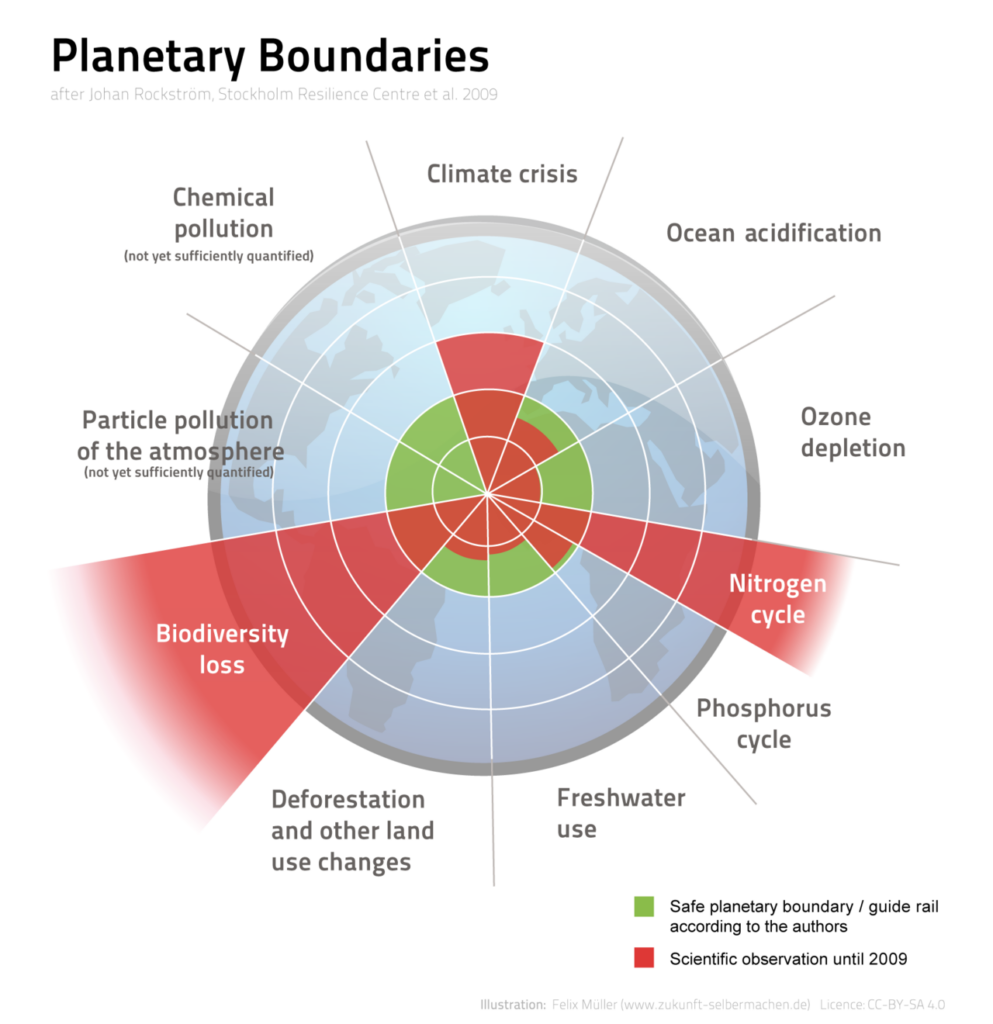
The 9 Boundaries
The below nine planetary boundaries serve as an outline for documentary:
- Climate change
- Biosphere integrity
- Ocean acidification
- Depletion of the ozone layer
- Atmospheric aerosol pollution
- Biogeochemical flows of nitrogen and phosphorus
- Freshwater use
- Land-system change
- Release of novel chemicals (heavy metals, radioactive materials, and plastics)
The inner green ring represents a safe planetary boundary where the metric is managed within estimated ecological limits.
At least four are in the high-risk red zones, which means they are at risk of irreversible ecological damage. This includes biodiversity, climate change, land-system change, and the nitrogen-phosphorus imbalance.
Some critics claim there is lacking evidence for these thresholds. But that does not discredit the need for this exercise on a global and local level.
Overall, the film does an excellent job breaking down the complex science for a mainstream Netflix audience.
Animal agriculture
“Changing diets may be one of the single most effective things we can do to build a better future”
Dr. Jonathan Foley, Project Drawdown
Aside from a couple of minor mentions of the need to eat healthily with less beef, the huge body of evidence specifically pointing to the widespread impact of animal agriculture on almost every one of these boundaries was missing.
Animal agriculture is the number one stressor in many of these categories. This includes land-system change, biodiversity loss, freshwater use, and the disruption of nitrogen and phosphorus cycles due to chemical fertilizers.
As Dr. Jonathan Foley from Project Drawdown mentions in a recent Eat-Lancet report: “In a world where climate change, biodiversity loss, food security, and diet-related illnesses are major concerns, changing diets may be one of the single most effective things we can do to build a better future.”
It’s not uncommon to minimize animal agriculture’s impacts on climate change with a narrow focus only on direct carbon dioxide emissions.
Widen the lens to include other more potent greenhouse gases like methane and nitrous oxide. And, factor in land use and opportunities of carbon sequestration, biodiversity, and resource use. The result?
One has to live in denial to devalue the urgency to make plant-based shifts.
Reducing meat for the planet
Scientists Poore and Nemecek (2018) concluded that moving from current diets to a diet that excludes animal products has transformative potential, reducing the following. This was based on the largest meta-analysis on the topic to date, which included almost 40,000 farms in 119 countries.
- Food’s land use by 3.1 billion hectares (a 76 percent reduction equivalent to the size of Africa), including a 19 percent reduction in highly valuable arable land;
- Food GHGs by 6.6 billion metric tons of CO2eq (a 49 percent reduction, 28.1% total GHG reduction);
- Acidification by 50 percent;
- Eutrophication by 49 percent; and
- Scarcity-weighted freshwater withdrawals by 19 percent
Furthermore, animal agriculture is by far the biggest driver of biodiversity and habitat loss.
It was mentioned in the documentary that wild animals now only represent 4 percent of all mammal biomass on planet Earth.
The figure is from this study, which shows that 60 percent of all mammals on Earth are livestock, mostly cattle, and pigs.
And, the statement about wild birds did not specifically point out the ethical and environmental atrocity where 70 percent of all bird biomass is farmed “poultry” like chicken.
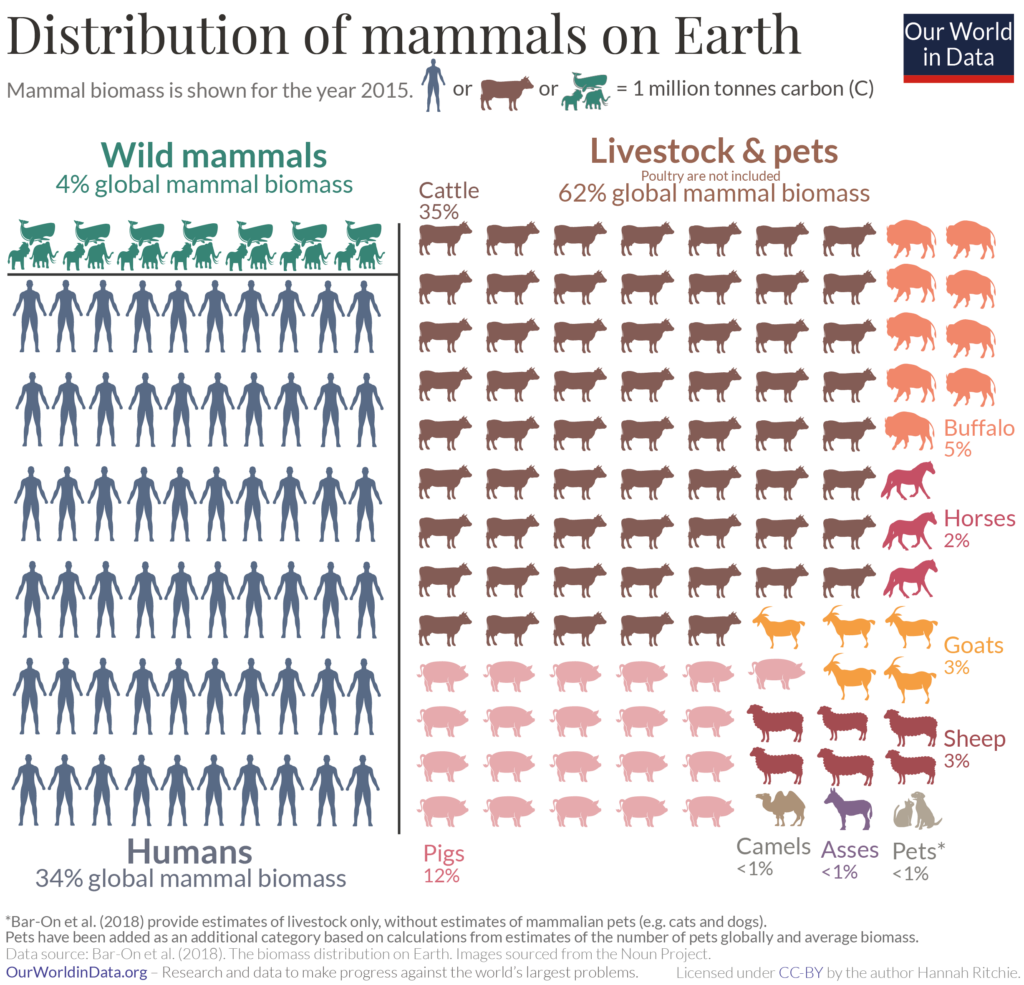
Air pollution
The only boundaries not necessarily benefited from a shift away from animal agriculture are novel entities, ozone depletion, and atmospheric aerosol loading, none of which are in high-risk zones.
However, as mentioned with aerosol loading, air pollution is a major concern.
Poor air quality is one of the largest environmental health risks worldwide. And, animal agriculture’s waste and fertilizer footprint is a major source of air pollution.
This 2021 study showed dietary shifts toward more plant-based foods could reduce agricultural air quality-related mortality by 68-83 percent.
It is in the nature of many scientists to just present the data and avoid advocating for specific solutions, perhaps to be seen as apolitical or just to avoid making mistakes.
However, in not doing so, we fall prey to the age of seemingly unlimited information where pseudo-experts twist solutions to meet certain corporate agendas.
Beef industry spreading misinformation
Consider that Tyson Foods spends double what Exxon gives on political campaigns and 33 percent more on lobbying. Whilst this is relative to revenues, it is one of the world’s largest meat companies.
The beef industry has also hired its own academic experts who minimize the links between ecological damage and animal agriculture.
Widespread disinformation campaigns have held back many from advocating for the systematic plant-based changes required to even come close to reducing the drivers of planetary decline.
How can we de-carbonize the planet?
Professor Rockström, rightfully so, calls for a fossil-fuel-free economy within 30 years. This is to stay within the Paris target of limiting warming to 1.5 degrees C from pre-industrial levels.
Our efforts to decarbonize the world’s energy are not happening quickly enough. And, many would also argue degrowth and affluence are even better metrics than decarbonization.
But what if we are able to immediately create a utopia of electric vehicles and solar energy? Failing to address animal agriculture would be our demise.
If we continue to subsidize farming animals and prop up this unnecessary industry, the sector would account for 49 percent of the emissions budget for maintaining within 1.5 degrees C rise by 2030.
A global food production shift is needed
Currently, the best option at scale to remove CO2 from the atmosphere is reverting a portion of our planet back to nature and rewilding the huge land footprint currently grazed by farm animals.
Shifts in global food production to plant-based diets by 2050 could lead to sequestration equivalent to 9-16 years of global fossil-fuel CO2 emissions.
And as the film states: “The Amazon could release 200 billion tonnes over the next 30 years. That’s equivalent to all the carbon emitted worldwide for the past 5 years.”
That is almost entirely due to an inflated demand for beef and soy feed crops.
To take the brilliant work of Professor Rockström seriously and as he stated it in the film, we need an immediate global agreement of a zero loss of nature from now onwards. This is for both carbon drawdown and biodiversity enhancement.
Furthermore, we need to reverse the trend. We can do this by granting back full property rights to indigenous communities. And, chipping away at reducing agricultural land use by systematic shifts to plant-based diets.
We also need to incentivize landowners with evidence-based carbon storage credits.
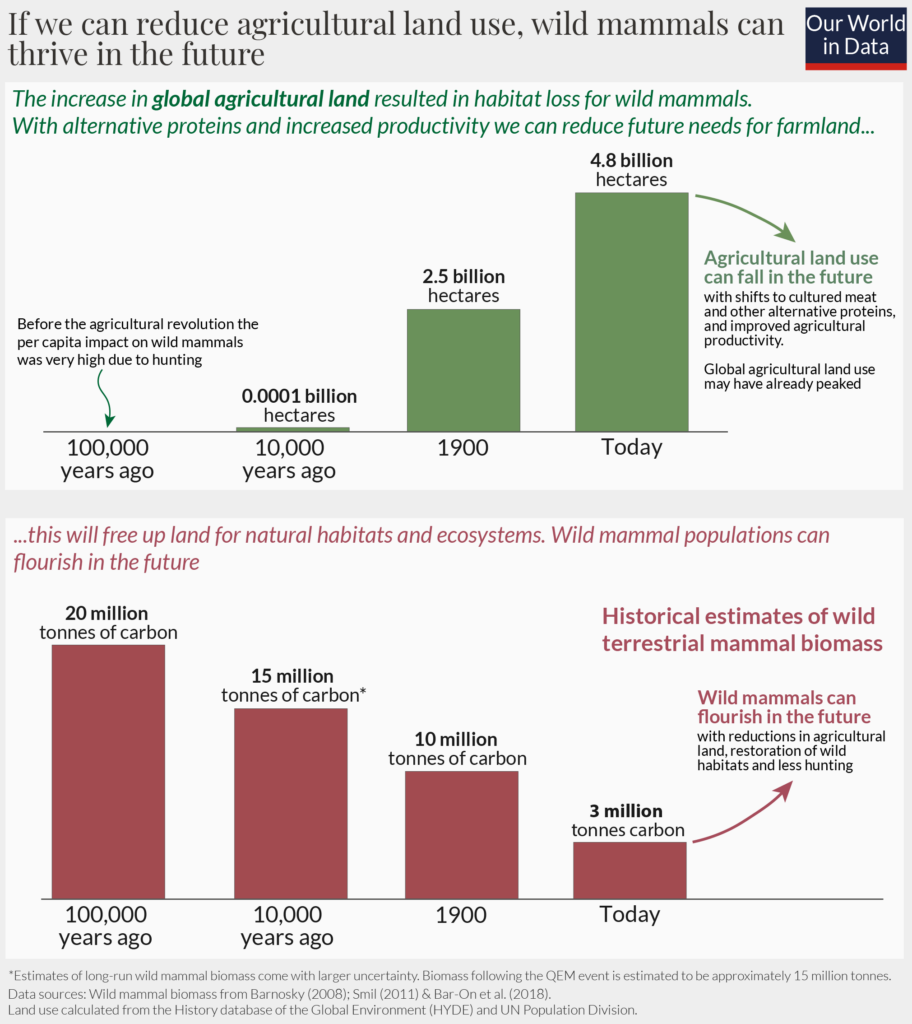
Covid-19: What will be the new normal?
While the Paris Agreement has largely been a failure as most countries are far behind their goals, there’s historical precedence in global environmental agreements working.
Scientific warnings on chemical pollutants translated into political action in the late 1980s that brought ozone depletion from a high-risk zone back to a safe level.
The actions to address the covid-19 pandemic were far from textbook and involved many political challenges that brought death rates much higher than necessary. Coordination on vaccine rollout is proving to be a success, unfortunately only for rich countries, in moving back to normal.
But what will be the new normal?
During the pandemic, nature has taken a major hit. This has led to record deforestation and habitat loss, a key driver of zoonotic diseases.
What’s the path back to a safe operating space?
Perhaps we need to change how we see this problem as we look at allowing nature to flourish instead of just operating safely.
While the flexitarian diet message of less meat and more plant-based protein is welcomed, it’s akin to saying we just need to move slightly away from coal, oil, and gas.
And, as stated in Breaking Boundaries, ‘eating healthy food might be the single most important way to contributing to save the planet’ is unfortunately too vague.
There are thousands of peer-reviewed articles pointing towards the need to shift diets to plant-based. And, the evidence is building despite the disinformation campaigns by Big Livestock. It’s absolutely not a silver bullet.
But, to avoid stating it does not do the science presented earlier in the film justice.
Framing the solutions on what would benefit everyone, regardless of whether one is an environmental advocate or not, is brilliant.
The takeaway from Breaking Boundaries
Who doesn’t want clean air, longer life expectancy, stable jobs, and reduced conflict over limited resources?
And as mentioned in Breaking Boundaries, if an asteroid was coming to wreak havoc, we’d all urgently try to minimize the damage and lives lost.
That asteroid is our current ecological crisis unfolding all around us. And this film is another warning to the world to take action at all levels.
You can watch Breaking Boundaries: The Science Of Our Planet on Netflix here
